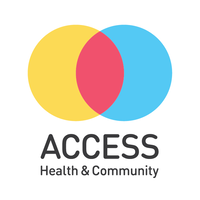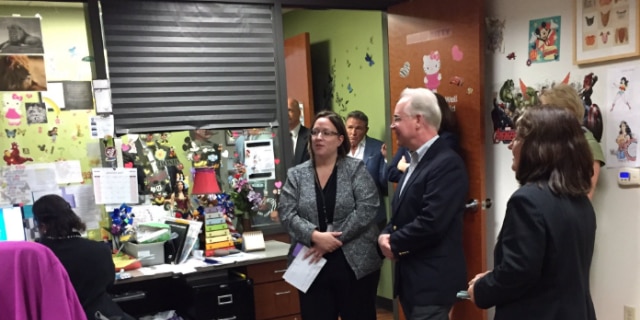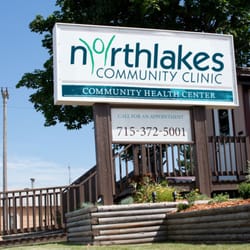Tracing the Early Origins of Community Health Centres
It might surprise you to learn that the first Community Health Centres (CHCs) date back well before the modern era, to the early 20th century.
Early proponents of the Community Health Centre or “community-oriented primary care” approach drew inspiration from the 19th century perspectives and teachings of the Prussian physician and multi-disciplinarian, Dr. Rudolph Virchow, who famously stated that “medicine is a social science, and politics is nothing else but medicine on a large scale”. While there is no direct lineage from Virchow to the earliest Community Health Centres, the physicians, nurses and other actors who were responsible for the world’s first CHCs were undoubtedly inspired by Virchow’s insights on “social medicine”.
Early proponents of CHCs all believed that it was essential to move beyond isolated physician care toward a multi-disciplinary approach, and to integrate first line health care (primary care) with community-level research, partnership, and action on social determinants of health within local communities.
The two earliest known Community Health Centre projects date back to the 1920s, on opposite sides of the globe, in China and Canada.
In China, the Beijing First Health Demonstration Station was established, in 1925, as a “social laboratory” for research and training of public health professionals, medical students and midwives at the Peking Union Medical College, and to provide general health services to the local population of 45,000.
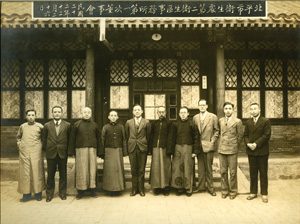 This “health station” vision was spearheaded by John B. Grant, a family physician born in China to Canadian medical missionaries. After completing his degrees in medicine and public health, Grant served as International Health Division representative for the Rockefeller Foundation and associate professor of public health at the Peking Union Medical College, where he led development of the health station. Grant is considered by many to be one of the world’s first public health practitioners.
This “health station” vision was spearheaded by John B. Grant, a family physician born in China to Canadian medical missionaries. After completing his degrees in medicine and public health, Grant served as International Health Division representative for the Rockefeller Foundation and associate professor of public health at the Peking Union Medical College, where he led development of the health station. Grant is considered by many to be one of the world’s first public health practitioners.
The Beijing First Health Demonstration Station placed strong emphasis on local sanitation efforts by establishing a chlorination plant for water, and launching street inspections for sewer and garbage problems. Priority was also placed on slowing the spread of communicable disease, through better reporting, isolation and tracking techniques, as well as health education. Through all these efforts, the target area’s death rate dropped nearly 20 percent — from 22.2 per thousand to 18.2 — in less than a decade.
In 1929, Grant and colleagues extended the health station approach into rural China by establishing another health station in Ding Xian, a county of 400,000 people west of Beijing. The Ding Xian health station sparked a comprehensive rural education and reform movement in China, providing affordable health care to local peasants and short training courses for village/community health workers. These later served as models for the training of barefoot doctors and for rural health reforms in China throughout the 1950s to 1970s. (1,2,3)
At almost the exact same time in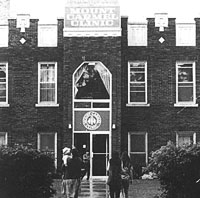 history — in 1926 — Mount Carmel Clinic was established in Winnipeg, Canada, by members of the local Jewish community. Winnipeg was a major hub of trade in North America at the time and, in the late 1800s and the early 1900s, the city of Winnipeg had thrown open its doors to the world as local businesses clamoured to meet the need for workers. Among those arriving in the city were thousands of Jews, mainly from Europe. Despite their major contributions to local economic and civic life, Jewish immigrants were systematically excluded from many services and opportunities in the city and so, in 1926, the community established Mount Carmel Clinic as a community-owned and operated organization to “look after our own”.
history — in 1926 — Mount Carmel Clinic was established in Winnipeg, Canada, by members of the local Jewish community. Winnipeg was a major hub of trade in North America at the time and, in the late 1800s and the early 1900s, the city of Winnipeg had thrown open its doors to the world as local businesses clamoured to meet the need for workers. Among those arriving in the city were thousands of Jews, mainly from Europe. Despite their major contributions to local economic and civic life, Jewish immigrants were systematically excluded from many services and opportunities in the city and so, in 1926, the community established Mount Carmel Clinic as a community-owned and operated organization to “look after our own”.
Anne Ross, a nurse who was one of Mount Carmel Clinic’s first staff members, has said that:
“…health workers emphasized curing only the physical affliction, without regard for the contributing factors of the illness. From my perspective, such a philosophy was terribly narrow-minded and almost nonsensical. I believed in a system of health care that was not acknowledged at the time. I believed in the idea of treating the individual – or family – as holistic entities. Every person responds physically and emotionally to their immediate environment and to their network of friends and family members. I felt it was highly advisable to investigate these factors as a function of an individual’s general health.” (4)
Two additional developments, in the United Kingdom and South Africa, also form the early global history of Community Health Centres.
Beginning in the early 1930s, a family physician in Wensleydale, UK, named William Pickles began to systematically record the name, date, village and diagnosis of all the people with infectious conditions he encountered in his local practice. Dr. Pickles collaborated with a multi-disciplinary team that included epidemiologists, geologists, a photographer, school mistresses, professional partners, and patients to identify community level trends and to develop community-level diagnoses as well as community-level interventions, implemented in concert with members of the community, to address community-level factors impacting health. (5,6)
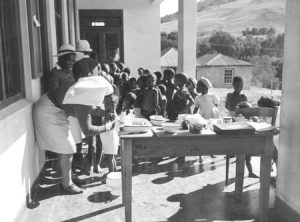 And, in the 1940s, Drs. Sidney and Emily Kark and colleagues implemented the Pholela Health Centre, a Community Health Centre located in the rural community of Pholela, in KwaZulu-Natal, South Africa. This is perhaps the most-widely known story of early era Community Health Centres. The Karks implemented a systematic approach in Pholela which they termed “community-oriented primary care”. This included looking at their patients’ health records from a community perspective. The Karks embedded the Pholela Health Centre within a ‘District Health System’, which had significant influence on early health system reform in South Africa and elsewhere.
And, in the 1940s, Drs. Sidney and Emily Kark and colleagues implemented the Pholela Health Centre, a Community Health Centre located in the rural community of Pholela, in KwaZulu-Natal, South Africa. This is perhaps the most-widely known story of early era Community Health Centres. The Karks implemented a systematic approach in Pholela which they termed “community-oriented primary care”. This included looking at their patients’ health records from a community perspective. The Karks embedded the Pholela Health Centre within a ‘District Health System’, which had significant influence on early health system reform in South Africa and elsewhere.
In 1946, the Karks moved to the city of Durban to direct the newly created Institute of Family and Community Health (IFCH), whose mission was to train personnel for a large network of health centers on the Pholela model. Students were trained at Pholela and at 6 new urban health centers, whose populations lived in municipal housing projects, urban slums, and shack settlements. The Karks ultimately left South Africa in the 1950s due to the growing oppression of the South African apartheid government, and continued to advance their community-oriented primary care vision in Jerusalem, Israel and at the University of North Carolina, in Chapel Hill, North Carolina, USA.
The Karks’ legacy has had major global reach, providing some of the earliest influences on development of preventive and promotive health approaches, and community mobilization and empowerment work. The vast network of Community Health Centres throughout the United States owes its origins to the leadership of (among others) Dr. Jack Geiger, a physician who worked and learned from the Karks at Pholela Health Centre. (7,8,9)
These early examples of Community Health Centres emerged in relative isolation from each other, in a world prior to global communications technology and travel, in an era that pre-dates the Breton Woods and United Nations systems that have since contributed to global knowledge-exchange and action. They demonstrate that the idea of a community-oriented approach to primary care, with attention to social determinants of health, can and did arise organically from the very local observations of health and social practitioners.
———————————————
- Liping Bu and Elizabeth Fee (2008). “John B. Grant International Statesman of Public Health”. Am J Public Health. 2008 April; 98(4): 628–629.
- Liping Bu. (2012). “From Public Health to State Medicine: John B. Grant and China’s Health Profession”. Harvard Asia quarterly.
- Jim Duffy (2005). “A Revolutionary in China”. Prologues. Spring 2005. John Hopkins University.
- Anne G. Ross (1998). Clinic with a Heart: The Story of Mount Carmel Clinic.
- R Moorhead (2001). “Pickles of Wensleydale”. J R Soc Med. 2001 Oct; 94(10): 536–540.
- William Pickles (1984). Epidemiology in Country Practice. Royal College of General Practitioners (Dec 31 1984).
- SM Tollman (1994). “The Pholela Health Centre–the origins of community-oriented primary health care (COPC). An appreciation of the work of Sidney and Emily Kark.” South African Medical Journal. 1994 Oct;84(10):653-8.
- Sidney Kark and John Cassel (1952). “Pholela Health Centre: A Progress Report”. South African Medical Journal. 1952; 26:101–104, 131–136.
- JD Kark and JH Abramson (2003). “Sidney Kark’s contributions to epidemiology and community medicine”. , Volume 32, Issue 5, 1 October 2003, Pages 882–884.



